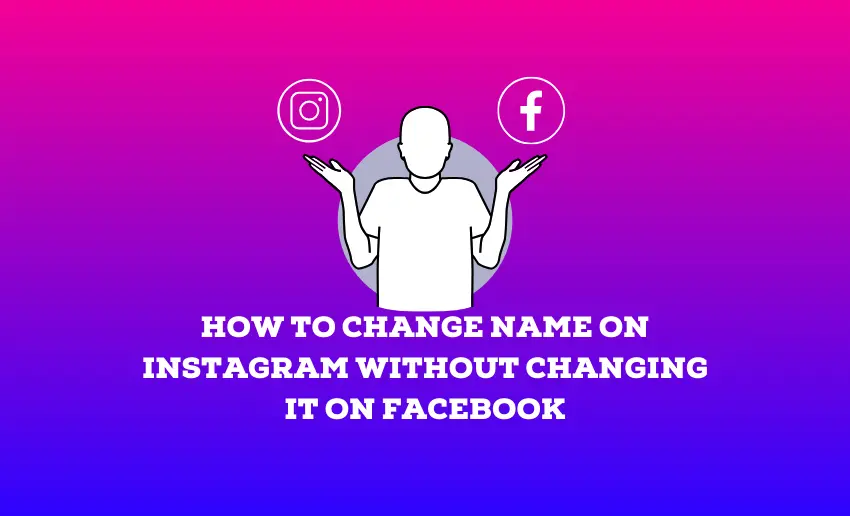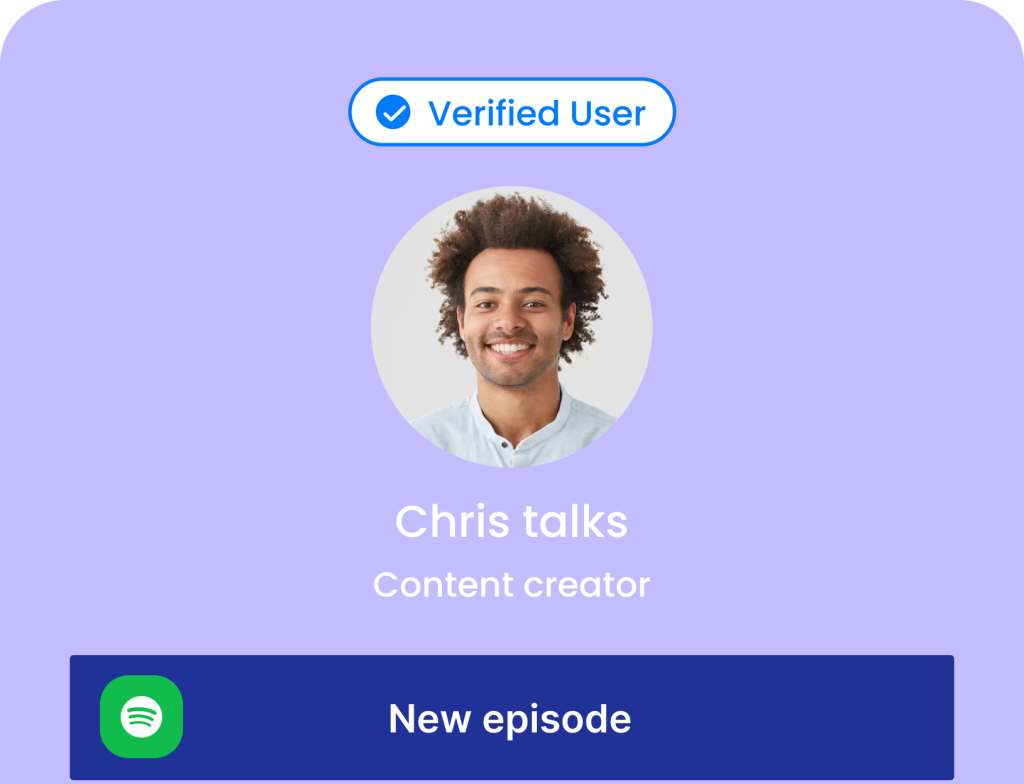As technology advances, managing various online identities becomes tougher. Therefore, balancing different identities across social media platforms is now a crucial skill. And with increasing interconnectivity between social platforms, this is becoming an increasing challenge.
For instance, you want a new name on Instagram and a fresh online image, but changing it might affect your Facebook profile. This is the challenge of altering your Instagram name without causing waves on your Facebook account. This guide is your roadmap, showing you how to change name on Instagram without Facebook.
It’s no news that Facebook and Instagram are run by the same parent company, Meta. As such, the interconnectivity between both platforms runs deep. Facebook acquired Instagram in 2012, integrating the two platforms at various levels. This ownership results in shared resources, technologies, and infrastructure, allowing for interconnected platform features and functionalities.
The integration is a double-edged sword, offering convenience and interconnectedness while raising concerns about privacy and individual autonomy. To successfully change name on Instagram without affecting your Facebook profile, follow these simple steps:
How to change name on Instagram without Facebook
- Open the Instagram app and tap on your profile at the bottom right corner.
- Tap on the three lines at the top right corner of the Instagram app.
- Select “Settings” and scroll down to find “Account Center.”
- Tap on “Profiles” and locate the linked Facebook and Instagram profiles.
- Select the Instagram profile and find the “Sync Profile Info option.”
- Turn off the toggle for syncing profile information, effectively separating your Instagram name change from Facebook.
With this setting disabled, you can freely change your Instagram name without affecting your Facebook profile. This gives you the freedom to have different names on each platform.
Alternatively, you can change your name on Instagram without changing it on Facebook by using this method:
- Open the Instagram app and tap on your profile at the bottom right corner.
- Tap on “Edit Profile” to make changes to your profile information.
- Select “Name” and notice how it automatically asks for a first and last name, linking it to your Facebook name.
- If prompted to change your Facebook name, you can manage this by tapping “Manage Settings” at the top of the screen.
- Inside the settings, locate “Sync this Profile Info” and toggle it off. This disconnects the link between your Instagram and Facebook names, allowing for independent changes.
6 Reasons for maintaining different names on Instagram and Facebook
1. Privacy and security concerns
Maintaining different names on Instagram and Facebook can enhance privacy. Using distinct names can make it harder for strangers or acquaintances to connect your profiles, adding a layer of security. It helps control who can find you and view your content on each platform separately, minimizing the risk of unauthorized access or unwanted attention.
2. Professional vs. Personal identity
Distinguishing between professional and personal identities is vital. Different names allow you to segregate your online presence, ensuring that your personal life on Facebook remains separate from your professional image on Instagram. It helps manage interactions and content sharing tailored to specific audiences without mixing the two spheres.
3. Branding and marketing strategies
For businesses or influencers, maintaining separate names serves branding purposes. It allows for distinct marketing strategies on each platform, targeting different demographics or showcasing varied facets of your brand. Consistent branding on Instagram and Facebook, with different names, can cater to diverse audiences more effectively.
4. Platform-specific content and engagement
Using different names enables tailored content for each platform. It allows you to engage differently with followers on Instagram and Facebook, providing content specific to their preferences. This personalized approach boosts engagement by addressing the unique interests of each audience, fostering stronger connections.
5. Avoiding confusion and misrepresentation
Different names help in avoiding confusion or misrepresentation. Consistency in identity on each platform prevents misunderstandings or mistaken identities, ensuring that individuals engaging with you on Instagram or Facebook perceive a coherent and authentic online persona.
6. Legal or personal constraints
Sometimes, legal or personal reasons necessitate different names. Legal obligations, stage names, or personal preferences might require distinct identities. Maintaining different names across platforms accommodates such constraints, allowing individuals to adhere to legal requirements or express themselves authentically.
Can I completely unlink Instagram and Facebook?
Yes, it is possible to unlink your Instagram and Facebook accounts completely. Here’s how you can do it:
- Tap your profile icon in the bottom-right corner.
- Next, tap the Menu icon in the top-right corner, which looks like three lines.
- Find and tap on Settings.
- Scroll down until you see “Accounts Center” and tap on it.
- Select “Accounts.”
- Choose the account you wish to remove and tap “Remove.”
- When a confirmation message pops up, tap “Continue.”
If both accounts have the same password, you might need to change one of them. Alternatively, if you prefer to have some connection between Instagram and Facebook, you can customize the settings. You have the option to stop the automatic sharing of your posts.
In the Instagram or Facebook app, navigate to the Accounts Center and select Sharing Across Profiles. Pick your profile and adjust the sliders to turn the option to Automatically Share your posts or stories on or off.
Is the Facebook-Instagram integration any good?
The Facebook-Instagram integration has both advantages and drawbacks, and its effectiveness largely depends on users’ perspectives and needs. Instagram and Facebook are interconnected in several ways, primarily due to Facebook’s ownership of Instagram. This connection facilitates seamless integration and cross-platform functionalities. Here’s how they’re linked:
1. Shared ownership and integration
Facebook acquired Instagram in 2012, integrating the two platforms at various levels. This ownership results in shared resources, technologies, and infrastructure, allowing for interconnected platform features and functionalities.
2. Cross-platform posting
Users can link their Instagram and Facebook accounts, enabling them to post content simultaneously on both platforms. This feature streamlines content sharing, allowing users to reach broader audiences and maintain consistency across platforms.
3. Unified advertising and insights
The advertising infrastructure on both platforms is interconnected, enabling businesses to run campaigns across Instagram and Facebook using a unified advertising platform. Additionally, insights and analytics tools provide data on user engagement and demographics across both platforms, offering a comprehensive view of audience behavior.
4. Single sign-on and data sharing
The platforms offer the option of single sign-on, allowing users to access both Instagram and Facebook using a single set of login credentials. Furthermore, certain data, such as user preferences or interests, might be shared between the platforms to enhance the user experience and personalized content recommendations.
5. Messaging integration
Messenger integration into Instagram’s direct messaging system allows users to communicate seamlessly across platforms. This merger enables cross-platform messaging between users on Instagram and Facebook without needing separate apps.
6. Profile connectivity
While the platforms allow for separate identities, they offer the option to link profiles. Users can showcase their Instagram profile information on their Facebook profiles and vice versa, fostering cross-platform visibility for their online presence.
Finally
Successfully managing your Instagram name change without affecting Facebook demands a balance between individual preferences, privacy, and audience engagement. Users can navigate these platforms effectively while preserving their desired online image by understanding the tools available and the importance of maintaining separate identities.








